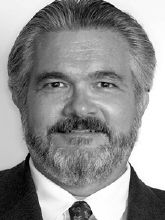I was recently asked to speak for the monthly "Grand Rounds" at the University of Southern California's Herman Ostrow School of Dentistry. Sponsored by the Department of Continuing Education, this presentation is open to anyone interested in attending, with the intent of promoting interdisciplinary cooperation and collaboration. I always enjoy the Grand Rounds as a way of staying abreast of recent developments in general dentistry and all the dental specialties. The attendees are mainly current students, along with staff and a few faculty members from each clinical discipline. In addition, USC has a robust Advanced Standing Program for International Dentists (ASPID) in which dentists who have been trained and licensed in other countries can earn U.S. dental diplomas in three years or less, depending on their prior credentials. As a result of that prerequisite, many of the students in this program are relatively experienced practitioners, both specialists and general dentists.
The topic of my presentation was "Full-Spectrum Orthodontics Using Invisalign". As an Invisalign user since the system was first introduced almost 20 years ago, I have been through all the ups and downs along the way, learning from both my successes and my many mistakes. After following the full learning curve in aligner orthodontics, I have reached the point in my own clinical development where I feel confident in taking on any case with the Invisalign system. As far as I am concerned, a "braceless" orthodontic practice is now entirely feasible. For my talk, to supplement my own clinical records, Align Technology very graciously supplied me with slides of patients illustrating the "full spectrum" of orthodontic treatment. Thus, I think I was able to make a convincing case.
Similar articles from the archive:
My presentation turned out to be one of the most highly attended Grand Rounds in the history of that lecture series. Audience interest in aligner orthodontics was enormous, and I noticed that the ASPID participants were especially interested. I always conduct my sessions more as interactive conversations than as one-way lectures - which often results in spirited discussions, debates, or even arguments with one or more attendees. The recent Grand Rounds talk was no exception. One of the ASPID residents who had trained as an orthodontist in the Middle East, and who had a fair amount of experience with aligner orthodontics in his home country, obviously wanted to demonstrate his knowledge to his peers, so he tried his best to spark a debate with me about Invisalign. Although his opinion was generally positive, he argued against using the system for one reason: the outcome is heavily dependent on patient cooperation. I was in the position of having to remain polite and professional, but most of the other orthodontists in the room - both the Americans and those in the ASPID - broke out in laughter at this remark. My critic was rather flummoxed and embarrassed, apparently confused as to what everyone was laughing about. Several of the orthodontists in the audience quickly pointed out to him that patient non-compliance is perhaps the biggest problem in orthodontics, and that it occurs with every appliance system. At this point, he conceded the argument and sat down.
In the current issue of JCO, Dr. Peter Sinclair, my old friend and colleague and long-time Associate Editor of JCO, returns as the host of our ongoing Readers' Corner column - one of our subscribers' favorite features. This month's column is part of a series comparing new surveys with the results of previous Readers' Corners. As it happens, the first topic Dr. Sinclair addresses is the problem of patient cooperation and how it is handled today with non-compliance appliances. Unsurprisingly, the popularity of these devices has increased since we asked about them back in 2004: fully 86% of our current respondents reported using them, up considerably from the 70% we reported 12 years ago. As you would expect, the devices were mostly used for Class II mechanics. Our results confirm the reaction of the orthodontists in my recent Grand Rounds audience: patient non-compliance remains a serious concern for our specialty.
That being said, it is interesting to note that an appliance system heavily dependent on patient compliance, Invisalign, is gaining such a large market share in orthodontics. My best-guess explanation is that patients' demand for smile improvement without obvious fixed appliances is such a strong motivator that they are more than willing to cooperate with our instructions. I would love to see some actual data to confirm or refute my opinion. Is there an orthodontic resident out there who needs a thesis project?
Dr. Sinclair also addresses the subject of enamel reproximation in this Readers' Corner. That's a technique that has also grown substantially in usage since we last surveyed orthodontists in 2006, but I urge you to peruse all the results of our current report and draw your own conclusions.
RGK


